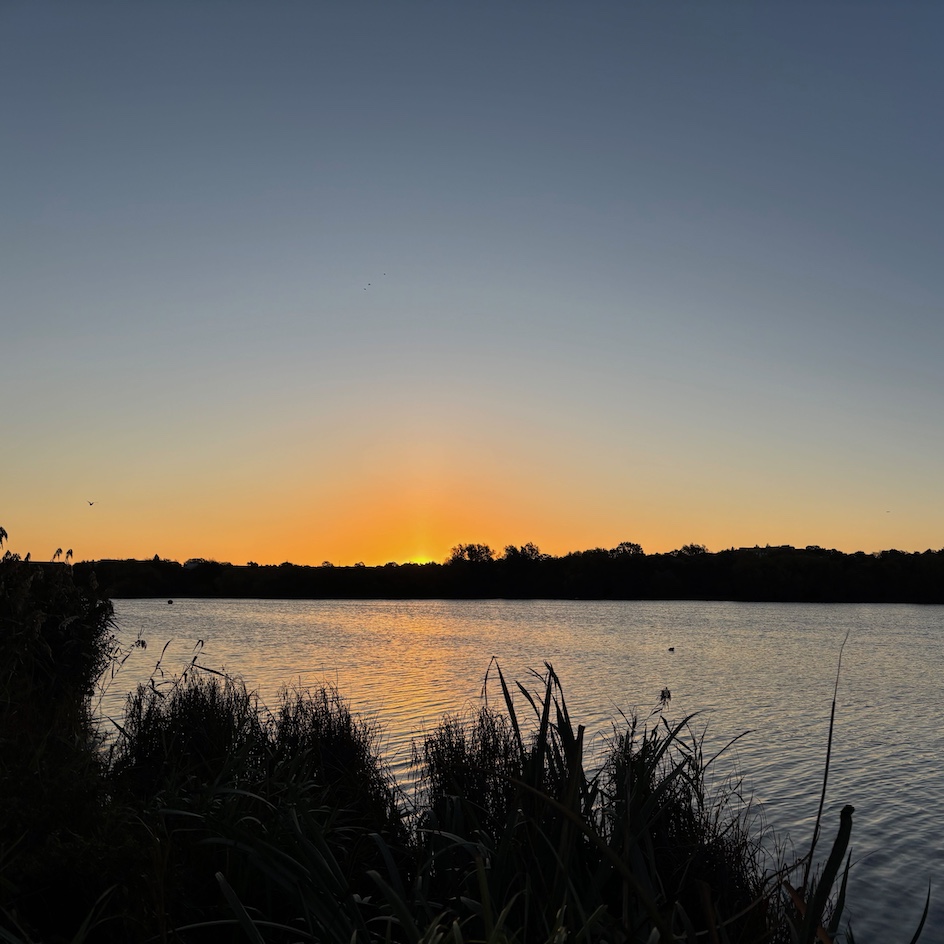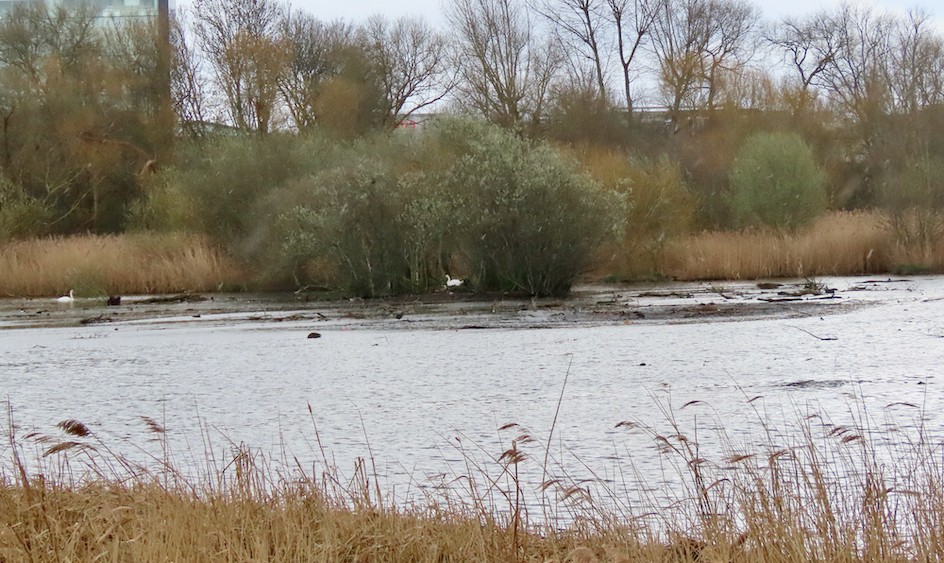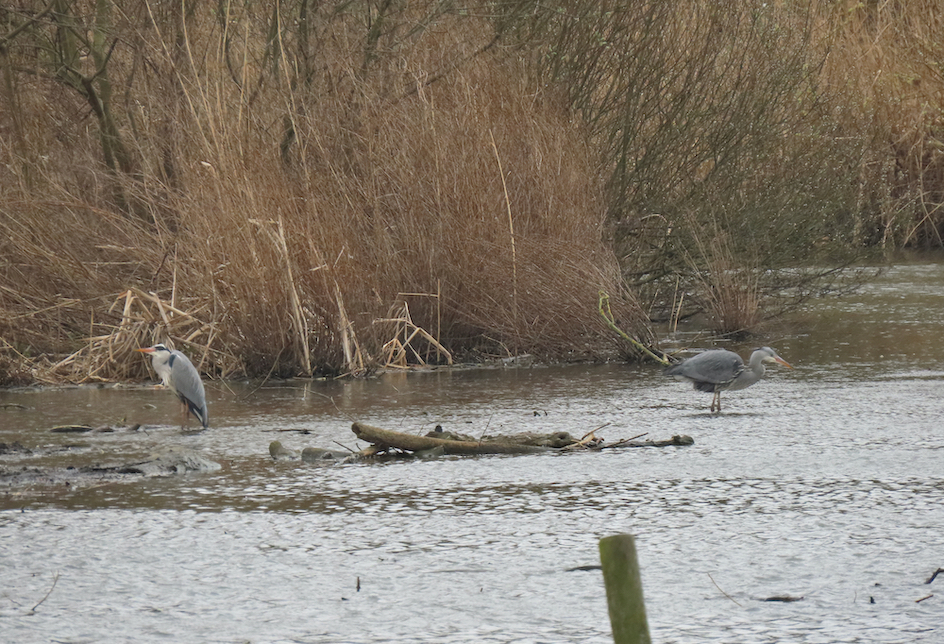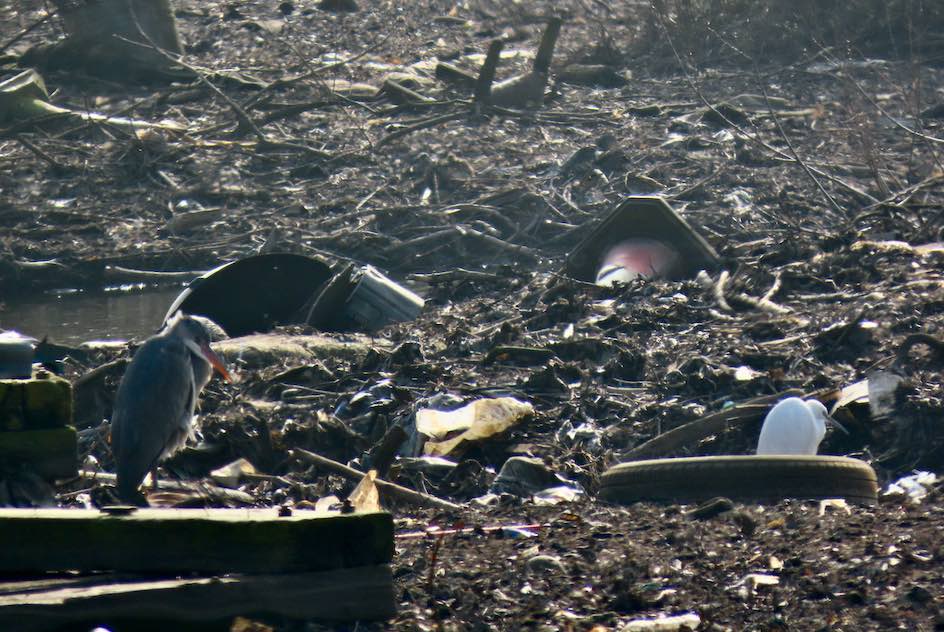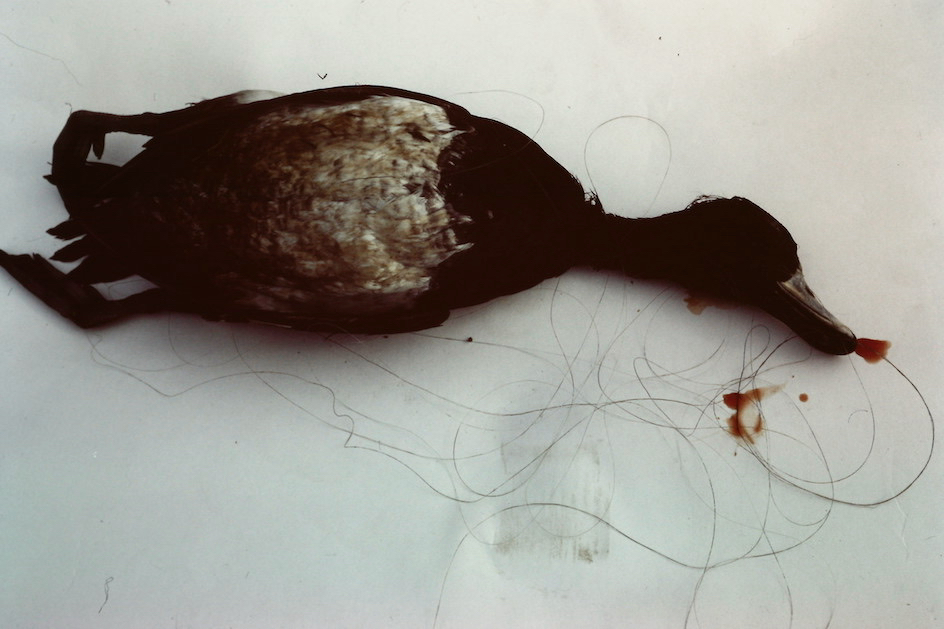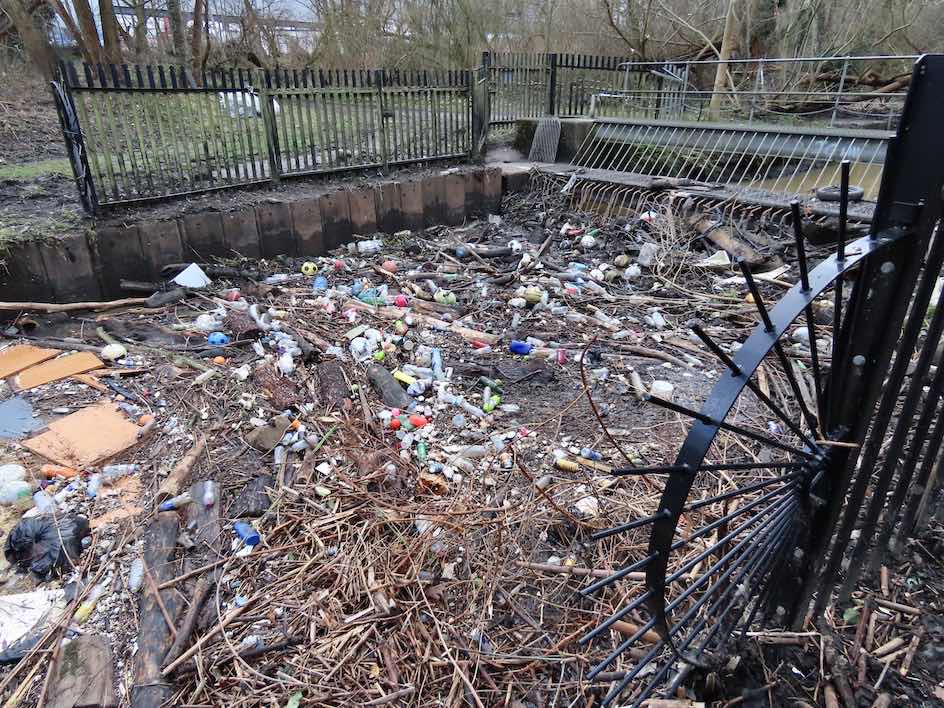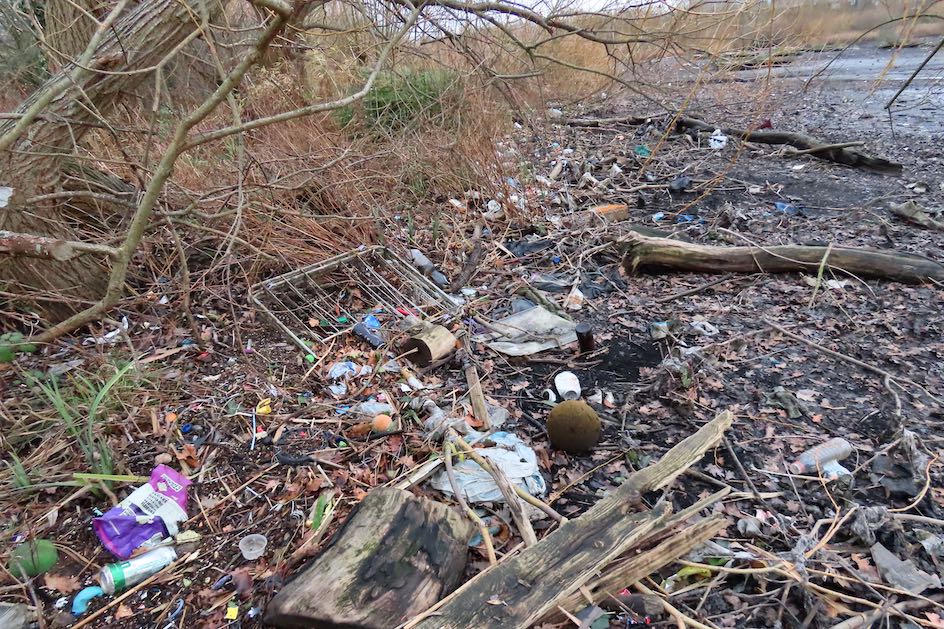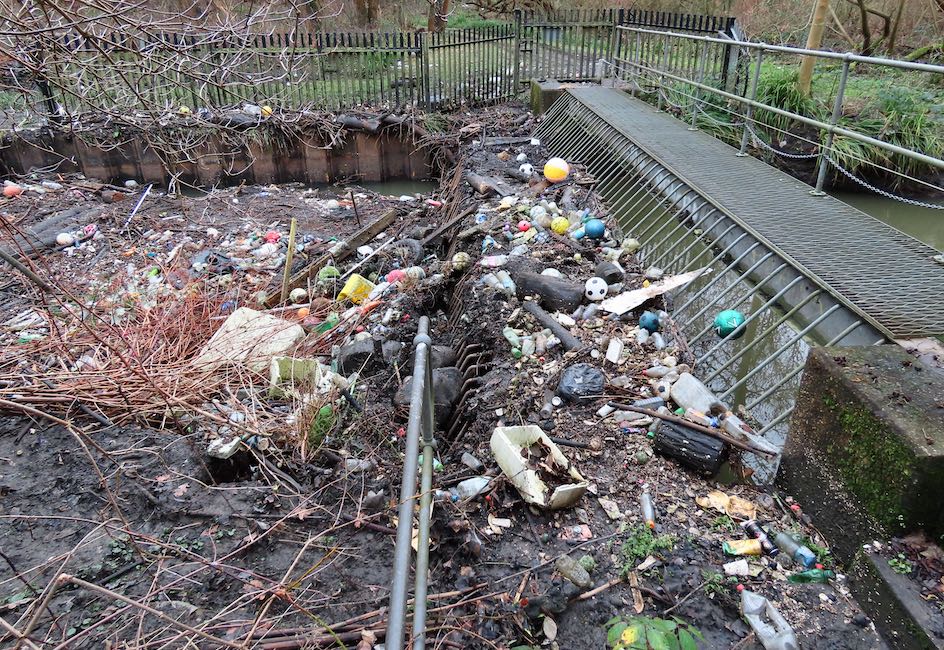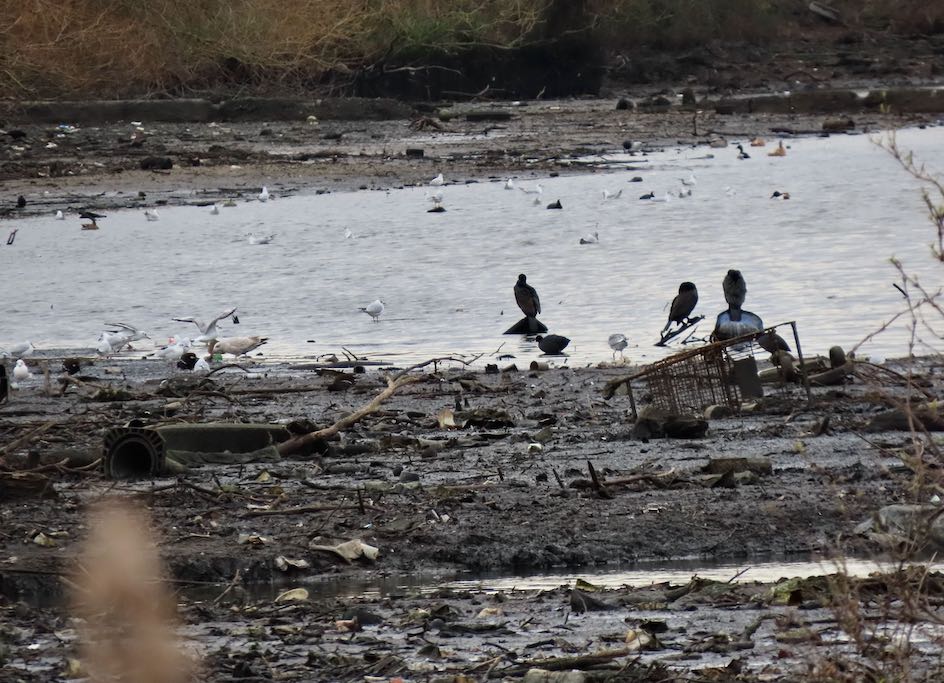In January 2021 I realised I wanted to do something to help save my local reservoir. I posted a couple of photo-stories on social media (here and here) and a blog post. Since then the public outcry has been loud and insistent. I have now written a full report (below) and last night I delivered it on behalf of fellow campaigners at a key meeting of stakeholders. I have also collated photos relating to the crisis in a Flickr photo album.
WELSH HARP CRISIS REPORT
Land owner, the Canal and River Trust (CRT) publicly played down the images starkly revealed by the temporary lowering of water levels for dam repairs at Welsh Harp Reservoir in early January 2021 as 'unsightly rubbish'. In reality they expose a deep-rooted environmental crisis.
Welsh Harp has been a Site of Scientific Interest (SSSI) for over 70 years, notified primarily for breeding wetland birds; the diversity of wintering waterfowl and variety of plant species growing along the water margins are also of special note for Greater London.
Yet today, all five of the land owners and land managers responsible - CRT, Barnet and Brent Councils, the Environment Agency (EA), and Natural England - have been brought face to face with decades of alarming neglect and legally what that may now mean.
SSSI arbitrator, Natural England currently classes Welsh Harp’s status as 'favourable'. Local conservation and pressure groups are beginning to fiercely contest this.
The ill-health of Welsh Harp is visible both offshore and onshore and is caused by a number of factors.
OFFSHORE
Offshore - overseen by CRT - long-term plastic pollution has been embedded and highly visible in the eastern and north marshes for years; from huge items such as car bumpers, supermarket trollies and wheelie bins, down through traffic cones and plastic chairs, to a thick carpet of shredded and single-piece microplastics; all of it resting in water and alluvium (silt and clay) laced with an excess of oil, heavy metals, nutrient pollutants and other contaminants from heavy urban runoff.
Where does it all come from? It has largely been washed in from the two inflowing rivers - Dollis Brook (River Brent) to the south-east and the Silk Stream to the north-east. And what is its impact? One must question Natural England’s assessment of 'favourable’. In reality numbers of winter wildfowl species - Gadwall, Pochard and Shoveler, for example - are significantly down against national averages according to data collected since 1970 by the respected Welsh Harp Conservation Group; while crucially the site index value of breeding wetland bird assemblages - Natural England’s key metric - would appear to be hovering just one precarious point above acceptable, with increasing pollution affecting water quality and food sources the likely cause. As if contaminated food supply weren’t enough, a diving tufted duck has been photographed surfacing with a plastic collar around its neck, a Great Crested Grebe (perhaps Welsh Harp’s signature species) distressingly drowning in fishing wire.
Blindsided by the outcry in January, CRT acted swiftly and promised a clean-up campaign and the mending of broken breeding rafts before the water levels returned to normal. Yet, in the two months they had to act, almost nothing was achieved. While local volunteer groups worked DAILY to collect thousands of bags of shoreline litter, CRT were largely absent. Their plan was to clear targeted large items of debris stranded on the marshes in the week when the waters began to rise, but the contractors and motorised pontoon that finally appeared turned out to be staggeringly inadequate. On the first morning (Feb 25) it took three men 30 minutes to retrieve two traffic cones and a plastic chair before they all gave up, realised the reservoir was filling too slowly, moored the boat and dug up a tyre on the southern beach instead. On day 2 they simply moored on the opposite side and litter-picked along the shore. Two days later it was March 1st, when most work gets curtailed for the start of the bird breeding season. Judging by pictures taken this week, nothing - in two months - has been meaningfully done. How is this even close to acceptable? Managing the wetland habitats is part of CRT’s statutory duty. How hard is it to make a plan that works?
Ros Daniels, CRT’s South-East director appeared on the recent BBC TV news report lamenting 'limited funds' and a 'small on-site team' and asked for volunteers for their litter-picking 'events'. How can this be about empty coffers and one-off events? CRT may have inherited a problem, may be a charity, but they are a statutory body charged with maintaining reservoir health and breeding bird numbers and they are self-evidently falling at even the lowest of fences.
Dredging has also been a hot topic. Decades of alluvium - much of it toxic - has been allowed to build up in the river channels altering the waters around the wetlands. CRT say that the reservoir has never been dredged before, and the removal of silt and other deposits to help clear the litter is logistically 'beyond any resources that are currently available to them'. Really? Firstly, key parts of the reservoir have been dredged before - very effectively when the wetlands were elegantly re-profiled in the 1980s - and secondly no one is suggesting dredging the entire reservoir for litter removal. What is being asked for, by experienced conservationists, is a staged plan of affordable selective dredging in critical areas as part of CRT’s duty to protect the shape of the breeding habitats. Why is this simply deemed off limits?
Of course continuous inflowing debris and contaminated water does not help. Here EA - not CRT - is tasked with upkeep of water quality and cleaning the two trash traps and Hoyle booms fifty metres upstream of the reservoir. In a recent letter to volunteers, EA said they emptied the traps weekly. Many however saw the photos in January of the sickeningly clogged and part-broken Dollis Brook trap and the mattress, plastics and effluence that have overspilled into the river channel downstream.
EA finally sent a specialist team to clear the Dollis Brook trap a couple of weeks ago. I say a team; it was in fact one man with one wheelbarrow. You may laugh. Two thirds of the debris was eventually removed but without the correct tools or manpower, a large island of silt and branches was still left wedged in the trap. And a week later the whole trap was full again. Are these tactics fit for purpose? What is the maintenance schedule? What is being done about further clearances, about surface oil collection, about the petrol interceptors in the drains, about the debris still left strewn downstream, and about the EA’s obligations under the Water Framework Directive to turn both streams into actual streams and not just ditches for sewage infiltration and urban runoff?
EA are also responsible for the consequences of the disastrous Staples Corner paint factory fire of 2018. An emergency bio-hazard clean-up was conducted at the time, yet anyone choosing to walk - as I have - in the affected woodland today will still smell the odour of chemical residue, and see the grey stagnant waters of the outfall still leeching into Dollis Brook and the reservoir. Who is monitoring this? Is it still a danger? Where are the waste reports? What is the maintenance schedule?
ONSHORE
And what about onshore? In a meeting between council representatives and local groups recently it was revealed that Barnet Council currently has no biodiversity plan, no ecologist and no parks enforcement. This would appear to be in spite of biodiversity goals laid out in the Welsh Harp Management Plan of 2016, their responsibilities to co-manage one of London's top SSSIs and the fact that most of the onshore area was designated a Local Nature Reserve in 2005.
No biodiversity plan means woodlands and wet woodlands are left 'self-managed', yet any ecologist knows both need occasional intervention to optimise their value to wildlife, and ALL need attention to stop them filling up with fly-tipped waste and abandoned rough sleeping sites. Walk through any woodland around the reservoir and you will find detritus: a mountain of car tyres; rolled up carpets crushing spring bulbs; washing machines, sinks and bed springs in a dappled glade.
No biodiversity plan also means no accurate mapping and therefore no systematic managmement of invasive plant species (Giant Hogweed, Himalayan Balsam, Japanese Knotweed) or fast-growing Crack Willow or SSSI-notified plant species (e.g. Common-spotted Orchid, Greater Spearwort; the only semi-official plant list is 25 years old) or key invertebrates, reptiles and amphibians. It also means warnings arising from bird counts that do benefit from yearly analysis submitted by the Welsh Harp Conservation Group (WHCG) are going unheeded. Why does this matter? Because how can you assess the pollution impact and habitat threat to any species without accurately measuring it? What message are you giving to the public about how much you care?
No parks enforcement means a fundamental blindness to dumped waste; it also means tolerance of unlawful angling, tolerance of discarded fishing line that kills protected breeding birds; tolerance of greenery destruction by waterside homeowners to improve views; and it means tolerance of vegetation clearances by waterside developers who bend Natural England-approved rules for the same ends. And all of this is often vegetation that is designed to screen breeding wildfowl. Why is there no parks enforcement, no ranger or warden (as in the past), when activities such as these so clearly threaten notified features of a SSSI?
The public has been openly blamed by CRT and EA lately for littering and dumping waste. Yet, while fly-tipping and littering is abhorrent, land owners and managers must accept they have allowed a broken window culture to establish itself in a SSSI. Why should the public respond responsibly when all they see are marshes filled with supermarket trollies and wheelie bins; a shoreline awash with litter; trash traps overflowing; streams awash with urban runoff; woodlands filled with rotting mattresses; reeds and brambles choked with invasive weeds and plastic bags; and no clear signage anywhere to even tell them they are entering a SSSI and a Local Nature Reserve, and what that signage might mean, what they might see, and how they might tread carefully, or be inspired?
Yet, in spite of this, a huge swathe of the public have been outraged. All the stakeholders were caught off-guard in January by the public outcry and the photo-stories on social media; by the critical news reports broadcast by ITV and BBC London; and by the mass litter-picking by volunteers, turning out every day the water level was lowered, improving their mental health, humping tyres, furniture, and household appliances, along with thousands of bags of litter, while CRT sat on their hands.
Yes, there are the noble aims marked out in the Welsh Harp Management Plan, and a revised version of it imminent, and yes, good work is going on, and well-meaning people are involved, but the central environmental crisis, by which I mean staggering levels of plastic pollution, toxic silt, waterborne contaminants, dumped waste, and little or no control of activities detrimental to a SSSI or accurate mapping of its affected species is currently not being adequately addressed and is potentially legally assailable.
CONCLUSIONS AND RECOMMENDATIONS
So what are the conclusions and recommendations?
CRT must reassess their hastily published plan for Welsh Harp and (1) act on their responsibility to present a long-term intensive clean-up programme for both offshore and shoreline plastic pollution, (2) refrain from framing and trivialising the crisis as an 'unsightly rubbish' issue, as if mendable by family day-outs, kindly volunteers and #PlasticsChallenge hashtags, (3) confront, cost and timetable a staged scheme of selective dredging around the wetlands for responsible habitat management making use of the experts who built it, (4) mend or rebuild crucial broken breeding rafts and the north marsh viewing platform in consultation with the WHCG, and (5) work harder with EA on improving water quality.
EA must (1) make repairs to the broken grill on the Dollis Brook trap and deliver an effective maintenance schedule to keep the trash traps and Hoyle booms clear (2) consider installing a second trap nearer Brent Cross to alleviate build-up (3) make a regular clean-up of river channels downstream of both trash traps especially after heavy rainfall and overspills, and consider a design modification to stop this happening so easily, (4) act to mitigate and report on any ongoing outfall pollution since the paint factory fire, and (5) act under the Water Framework Directive to drastically improve the water quality of Dollis Brook and the Silk Stream.
Barnet Council (and Brent Council where relevant) must use S106 windfalls from the private Hendon Waterside development and other funds to (1) deliver a comprehensive implementable biodiversity plan and not just await the new 'Welsh Harp Vision' in which many initiatives - as was admitted in a recent meeting with local groups - will be unaffordable pipe dreams (2) begin immediate accurate mapping of invasive and rare plant species and wildlife (3) employ better methods to deter fly-tipping and begin a major woodland, scrub and riverbank scheme to clear dumped rubbish (4) stop unlawful angling, the discarding of lethal fishing tackle and random greenery destruction and (5) create clear SSSI and Local Nature Reserve public information signage - with common branding agreed by all stakeholders - at all entrances to encourage best practice from the public and stop the broken window culture.
And what happens is steps aren’t taken?
Firstly, Natural England have the power to change their assessment of Welsh Harp, and could step in and require necessary actions to be taken through a management notice; and secondly, public questions might be raised about the relevant authorities’ adherence to their "Biodiversity Duty" (outlined in the Natural Environment and Rural Communities Act of 2006, which includes "restoring or enhancing" a habitat). Yes, this duty is acknowledged in the Welsh Harp Management Plan, but it is tempting to ask - with no biodiversity plan or ecologist at Barnet Council - is that just lip service?
I am a keen birdwatcher. I used to come to Welsh Harp for its famous winter wildfowl and laugh off the wheelie bins and mattresses as 'gritty and urban' but then one day recently I just didn’t think it was funny anymore. I suddenly realised it was actually horrific. And the more I have got involved, the more I realise an environmental tragedy is being played out.
Natural England base their assessment of Welsh Harp’s health on the yearly number and variety of breeding wetland birds using a points-based system; 1 point for a common breeding bird, 6 for rarity. A total score of 31 is the target. Welsh Harp currently stands at 32. How could it be more precarious? CRT, the EA and the councils have a statutory duty to help maintain this figure. This report suggests they are barely doing enough. To compound matters, the total number of wetland birds also shows a major decline in key species. Pochard, for example, are down from a trailblazing Welsh Harp highpoint of 490 to the current figure of 43 against a national average of 230. What happens when just one or two of these declining species stops breeding? It all points to the status of a SSSI hanging by a thread.
And the root of all these declines? It would seem to lie in crippling plastic pollution, silted-up habitats, poor water health and food availability, set against administration that fudges clean-ups, lacks a biodiversity plan and parks enforcement, and inadequately communicates with a public - let’s face it, freshly eager mid-pandemic for interaction with nature - about what a SSSI actually means and how they might engage with it and help look after it.
Call it what you like - waste crisis, litter crisis, unsightly rubbish - at the end of the day what we are confronted with is a SSSI in the balance, and an environmental crisis set within the legal framework of the Wildlife and Countryside Act of 1981 that needs funding and fixing urgently, or risks further public outrage and action, and other acts and regulations.
With thanks to: Dr Leo Batten and Magnus Andersson (WHCG), Leila Taheri and Daniella Levene (Friends of the Welsh Harp), Sahil Kher (Good Law Project), Feargal Sharkey.
